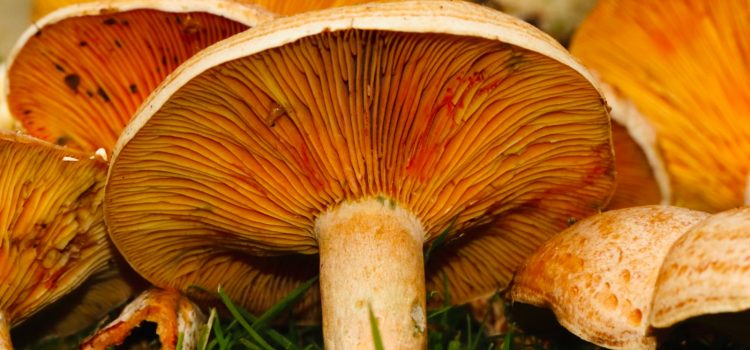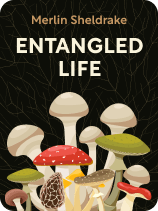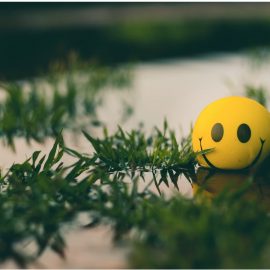

This article is an excerpt from the Shortform book guide to "Entangled Life" by Merlin Sheldrake. Shortform has the world's best summaries and analyses of books you should be reading.
Like this article? Sign up for a free trial here.
What are the common uses of fungi in daily life? How do fungi help anxiety and the environment?
The role of fungi expands far wider than supporting plants, soil, and the cycle of life. In Entangled Life, Merlin Sheldrake says that fungi could solve pressing problems in everyday life if we spent more time and resources studying fungi.
Here we’ll focus on fungi’s potential to address two of these problems: mental illness and environmental destruction.
Problem 1: Mental Illness
According to Sheldrake, one of the uses of fungi in daily life is for treating mental illnesses. There’s strong evidence that psilocybin mushrooms—also known as magic mushrooms—can effectively treat mental illnesses such as depression and anxiety. These mushrooms naturally contain psilocybin, a psychedelic compound.
Research shows that this compound reduces activity in people’s default mode network (DMN), a part of the brain associated with self-awareness and self-related thoughts. When psilocybin suppresses activity in the DMN, other areas of the brain begin connecting. This changes your thinking by fading your ego and “offroading” beyond your well-worn thinking pathways
Problem 2: Environmental Destruction
Finally, according to Sheldrake, fungi have the potential to reduce environmental destruction and rehabilitate areas devastated by environmental disasters. People are already using fungi for these purposes, and Sheldrake argues we should continue investing resources in finding fungal solutions to environmental problems. Here, we’ll explore three ways people are using fungi to solve environmental issues.
Mycoremediation: This is when fungi digest and break down human messes, from chemical spills to trash heaps. For instance, in Mexico City, a white rot fungus feasted on mounds of diapers, reducing their starting mass by 85%—and producing edible, disease-free mushrooms in the process. (Shortform note: Some types of mycoremediation don’t only clean up human messes—they also generate profit. For instance, a recent study suggests that reishi fungi effectively consume diaper waste and food waste, and in doing so they produce high-quality, profitable medicinal mushrooms.)
Mycofiltration: This is when a dense mat of mycelium is used to filter contaminants out of water. (Shortform note: Some researchers are hopeful that efforts involving mycofiltration can not only filter contaminants, but they could also address environmental racism. This is when Black, Indigenous, and communities suffer from disproportionately more health issues because they’re more likely to live near environmentally hazardous areas, such as areas with contaminated water. Because mycofiltration filters are cheap, they could offer these communities affordable methods for filtering water until longer-term solutions address the root causes of this contamination.)
Mycofabrication: This is when mycelia are used to create building materials, packaging, and textiles that replace less environmentally-friendly materials such as wood, plastic, and leather. (Shortform note: Materials produced through mycofabrication have an additional advantage over the less environmentally-friendly materials they aim to replace: They’re less likely to become unavailable due to supply chain issues. The Covid-19 pandemic exposed the vulnerability of supply chains, making materials like wood more expensive and less available. Mycofabricated materials are less likely to be impacted by supply chain issues because they require less energy to produce and they can be produced faster than the materials they’re replacing.)
| How You Can Contribute to Knowledge of Fungi Throughout his book, Sheldrake emphasizes both the potential of fungi to solve many pressing problems and how our lack of knowledge about fungi limits how much we can access these solutions. He identifies increased research and collaboration among scientists as ways to increase our knowledge of fungi. However, there are also ways that everyday people and fungi enthusiasts can contribute to our understanding of fungi. For instance, consider helping document fungal biodiversity. There aren’t enough professional mycologists to document fungal biodiversity, but everyday fungi enthusiasts can help by making information on fungi easier for trained experts to access. You can contribute to this effort by taking clear photos of fungi, noting the location of the fungi you photographed, and uploading the information to a database such as iNaturalist or Mushroom Observer. |

———End of Preview———
Like what you just read? Read the rest of the world's best book summary and analysis of Merlin Sheldrake's "Entangled Life" at Shortform.
Here's what you'll find in our full Entangled Life summary:
- An examination of what we know and don't know about fungi
- How fungi can help solve many modern-day problems
- The three most important benefits of fungi






